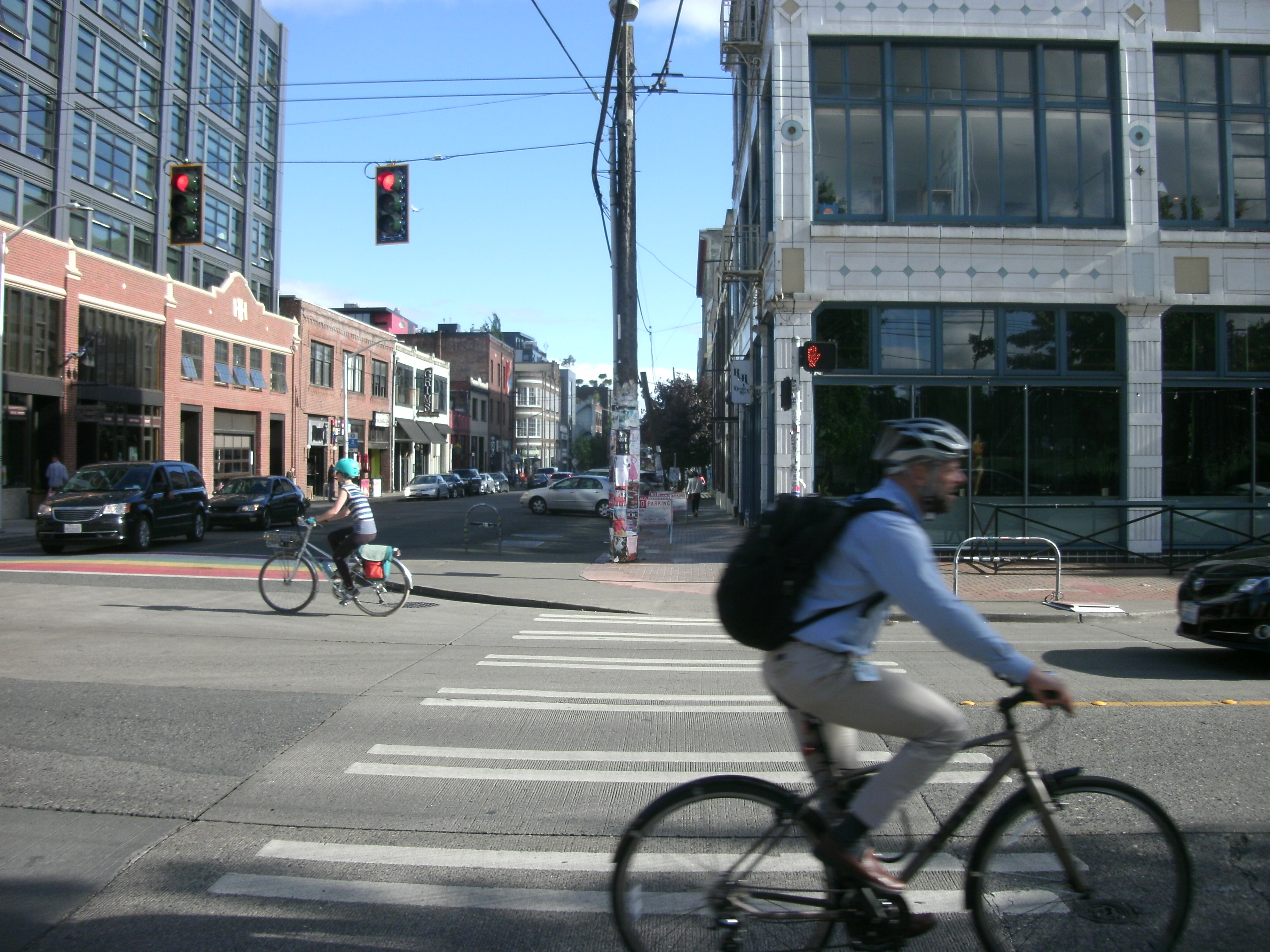Last August, the Seattle Department of Transportation (SDOT) experimented with turning one of the city’s busiest nightlife corridors into a pedestrian zone: on three consecutive Saturday nights from 8pm to 2am Pike Street was closed to vehicle traffic from Broadway to 12th Avenue. And on two of the three weekend nights, cross-traffic was not allowed to cross Pike at 10th or 11th Avenues. Police were stationed at either end of the corridor, and programming stages featuring performers were added in the middle of the blocks on several of the evenings.
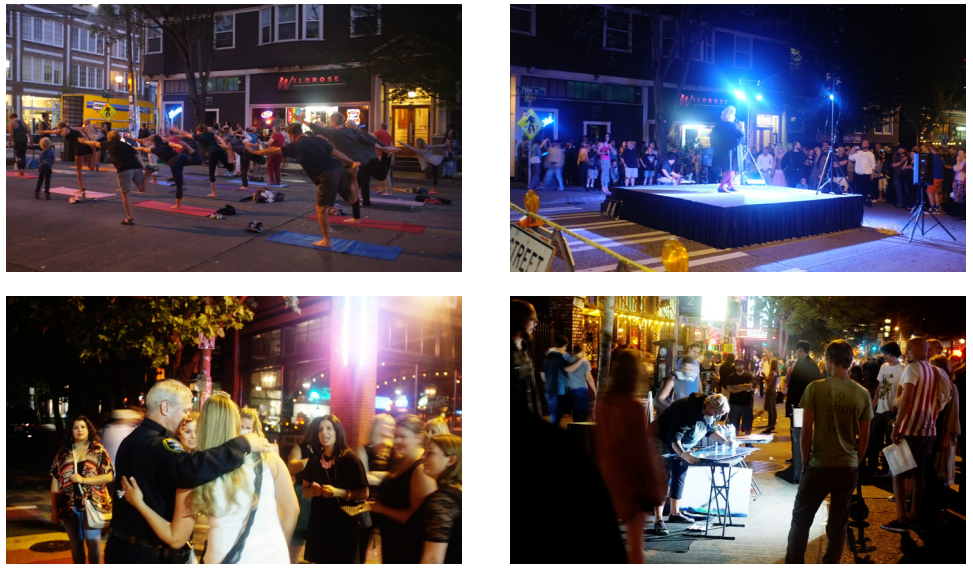
The conventional wisdom is that reaction to the street closure was mixed. SDOT’s survey results show that those who offered negative feedback on the closure were mostly concerned with the timeframe for the closure. Pike/Pine residents seem to want a change on Pike Street at all times of day.
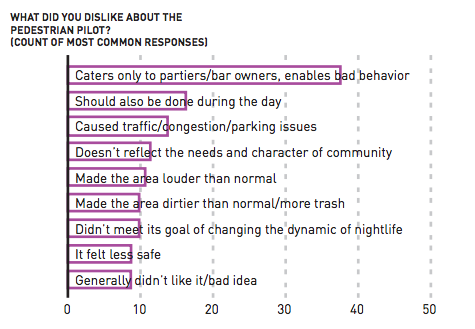
SDOT’s data shows that sidewalks are overcrowded on weekend nights on Pike Street. Volumes along the corridor are comparable to a weekday commute in Downtown, except Pike Street sidewalks are much narrower, with more obstructions, particularly in the most high-traffic areas. For example, in front of Caffe Vita where the sidewalk also has seating.
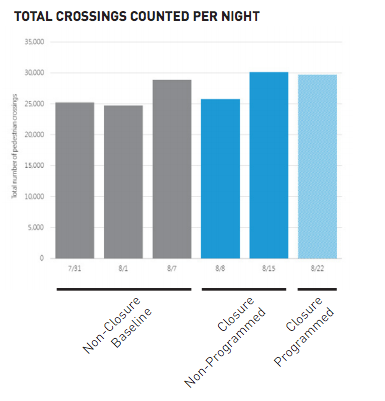
This chart shows counts for standing and sitting pedestrians along that particular stretch, during the baseline study night before the street closure pilot.
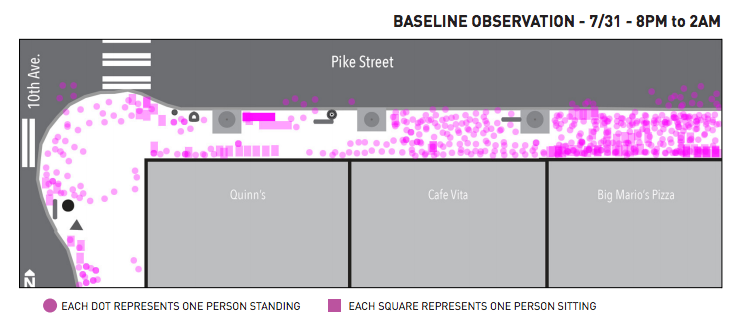
My experience with the street closure was that pedestrians still kept mostly to the sidewalks. That might be because the closure was very new and strange, but also because the sidewalks are where people are hanging out, business entrances are, and where people are used to walking. It seems like an obvious solution to study removing parking along Pike to allow more room for pedestrian overflow while still allowing traffic. Adding in a temporary barrier between the parking lane and the travel lane might make pedestrians move comfortably.
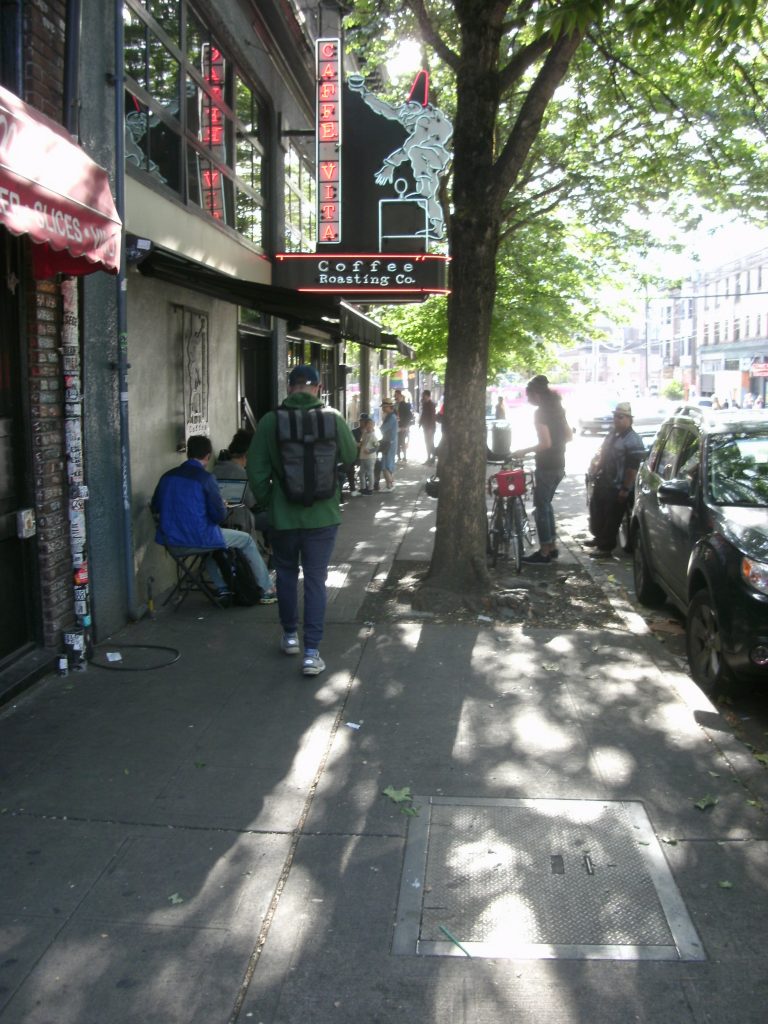
A streatery in front of Caffe Vita and Big Mario’s also seems like an obvious solution to the sidewalk cafe table overcrowding in that area. Loading and unloading space for businesses would definitely need to be retained, but the peak pedestrian travel times, 11pm to 1am on weekend nights, should not conflict with loading times for businesses.
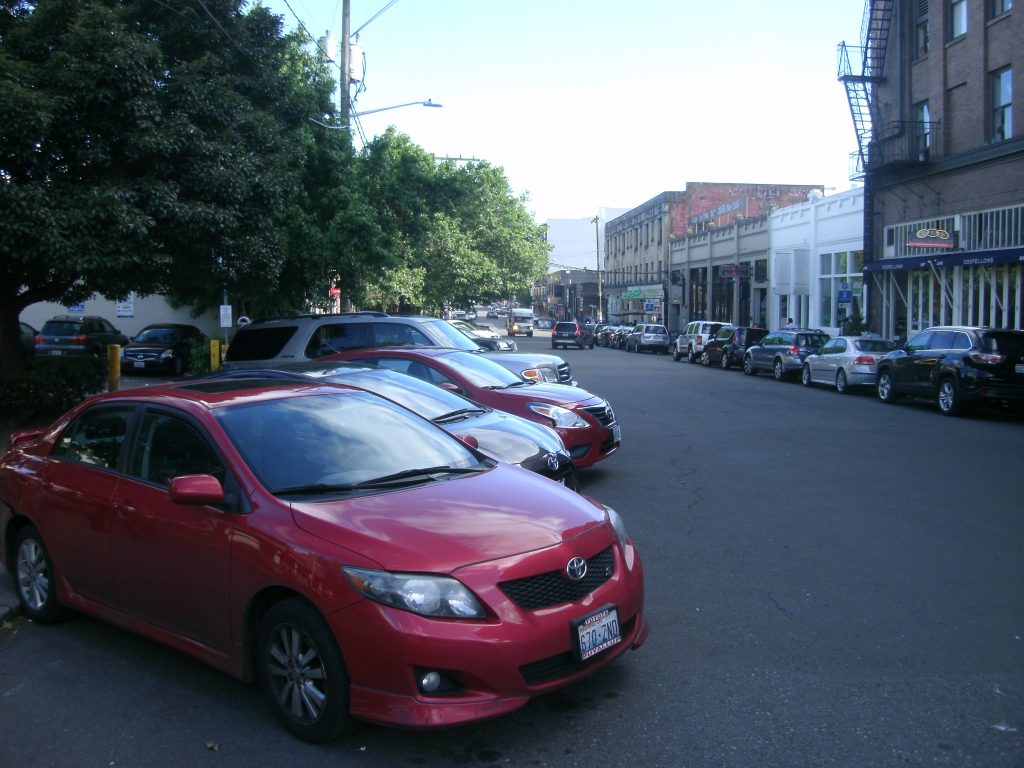
In addition, Union Street is only going to become more and more popular for pedestrians as well. This will allow pedestrian traffic to more evenly disperse in the neighborhood, reducing moments of peak pedestrian overcrowding. But Union is lacking in the pedestrian facilities that Pike and Pine have. Union is also the main bike corridor through the neighborhood, and will be for the foreseeable future. It deserves infrastructure that pedestrians can have confidence in.
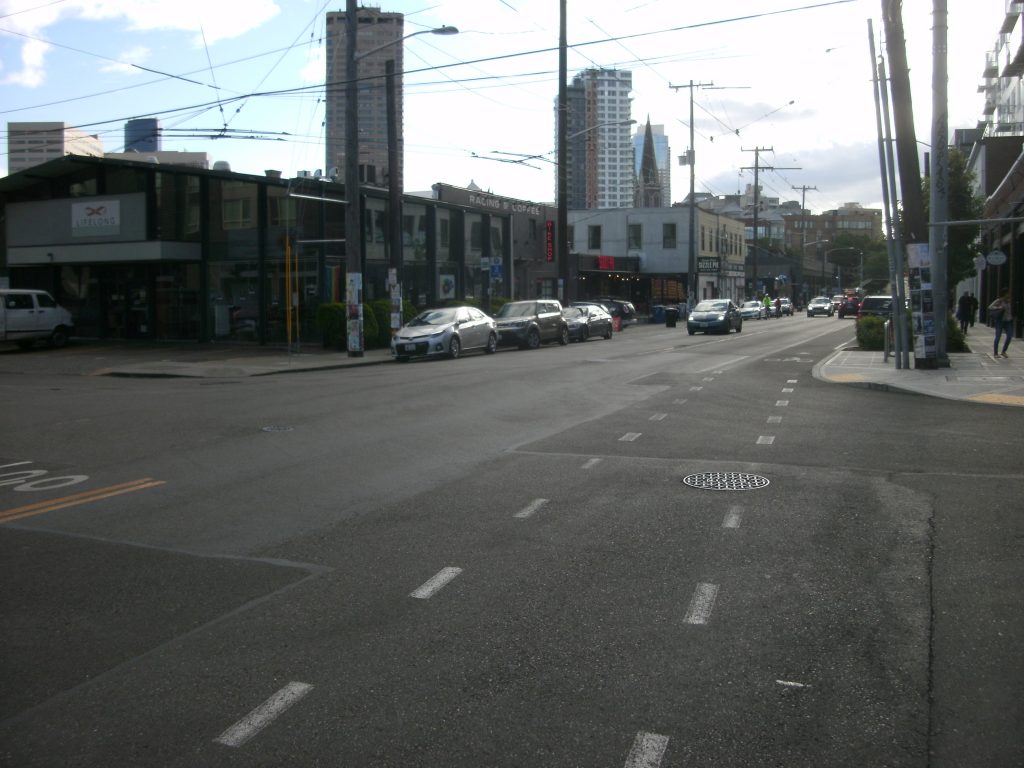
SDOT is hosting an open house tonight (Tuesday, June 14th) from 5pm to 8pm. This is a brainstorming session for people to share their broad ideas for how to make Pike/Pine better for people. Pike/Pine is already one of the best neighborhoods in Seattle for walking, and we should capitalize on that fact and make it a truly transformative space for people.
Ryan Packer has been writing for The Urbanist since 2015, and currently reports full-time as Contributing Editor. Their beats are transportation, land use, public space, traffic safety, and obscure community meetings. Packer has also reported for other regional outlets including Capitol Hill Seattle, BikePortland, Seattle Met, and PubliCola. They live in the Capitol Hill neighborhood of Seattle.


